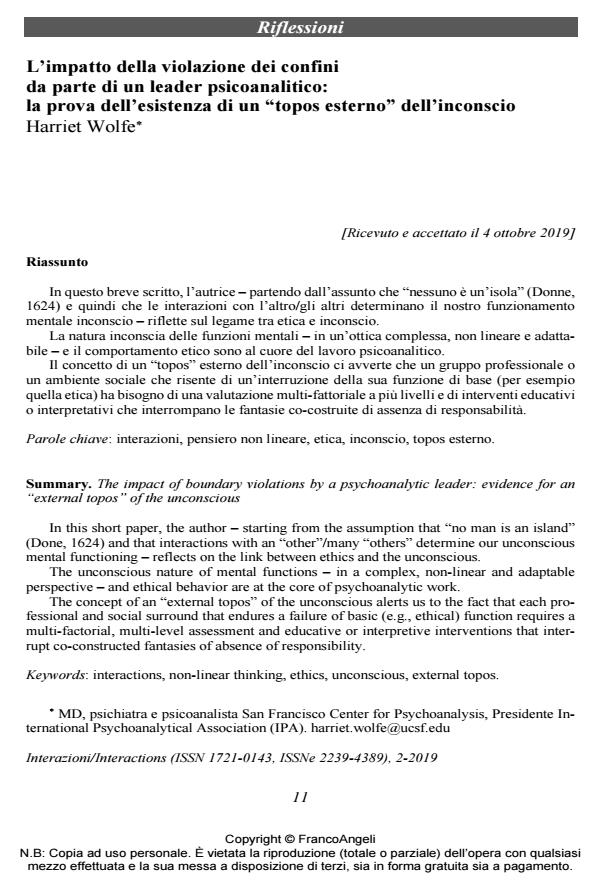The impact of boundary violations by a psychoanalytic leader: evidence for an "external topos" of the unconscious
Journal title INTERAZIONI
Author/s Harriet Wolfe
Publishing Year 2019 Issue 2019/2
Language Italian Pages 5 P. 11-15 File size 125 KB
DOI 10.3280/INT2019-002002
DOI is like a bar code for intellectual property: to have more infomation
click here
Below, you can see the article first page
If you want to buy this article in PDF format, you can do it, following the instructions to buy download credits

FrancoAngeli is member of Publishers International Linking Association, Inc (PILA), a not-for-profit association which run the CrossRef service enabling links to and from online scholarly content.
In this short paper, the author ‒ starting from the assumption that "no man is an island" (Done, 1624) and that interactions with an "other"/many "others" determine our unconscious mental functioning ‒ reflects on the link between ethics and the unconscious. The unconscious nature of mental functions ‒ in a complex, non-linear and adaptable perspective ‒ and ethical behavior are at the core of psychoanalytic work. The concept of an "external topos" of the unconscious alerts us to the fact that each pro-fessional and social surround that endures a failure of basic (e.g., ethical) function requires a multi-factorial, multi-level assessment and educative or interpretive interventions that interrupt co-constructed fantasies of absence of responsibility.
Keywords: Interactions, non-linear thinking, ethics, unconscious, external topos.
Harriet Wolfe, L’impatto della violazione dei confini da parte di un leader psicoanalitico: la prova dell’esistenza di un "topos esterno" dell’inconscio in "INTERAZIONI" 2/2019, pp 11-15, DOI: 10.3280/INT2019-002002